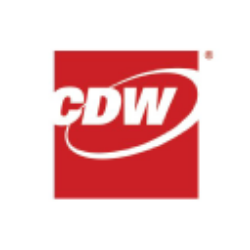Rockwell Automation, Inc.'s Economic Moat and Moat Trend Analysis
I. Understanding the Economic Moat Concept
What is an Economic Moat?
An economic moat refers to a company's ability to maintain competitive advantages over its peers to protect long-term profits and market share. The term, popularized by Warren Buffett, draws an analogy to medieval castles protected by water-filled trenches (moats). In business terms, it represents structural barriers that prevent competitors from eroding a firm’s profitability.
Key Components of Economic Moats:
- Intangible Assets (brands, patents, regulatory licenses)
- Switching Costs (customer lock-in due to high transition expenses)
- Network Effects (value increases as more users join the ecosystem)
- Cost Advantages (scale, proprietary technology, or access to resources)
- Efficient Scale (dominance in niche markets where new entrants struggle to gain traction)
Why Economic Moats Matter
Companies with wide economic moat stocks consistently outperform peers because they:
- Sustain ROIC (Return on Invested Capital) above WACC (Weighted Average Cost of Capital)
- Resist pricing pressures during economic downturns
- Reinvest profits into innovation to widen their moat over time
II. Rockwell Automation’s Economic Moat Framework
Rockwell Automation (ROK), a global leader in industrial automation and digital transformation, demonstrates multiple overlapping moat sources. Let’s dissect its competitive advantages:
1. Intangible Assets: Software & IP Portfolio
Rockwell’s $2.1 billion annual R&D investment (12% of revenue) fuels innovations in:
- FactoryTalk software suite: A unified platform for industrial IoT, analytics, and machine learning.
- Patents: Over 1,200 active patents in automation controls, edge computing, and cybersecurity.
- Regulatory compliance tools: Critical for industries like pharmaceuticals and aerospace.
Case Study: The 2023 acquisition of CUBIC Inc. added AI-driven predictive maintenance algorithms to Rockwell’s portfolio, creating cross-selling opportunities across 80% of its existing Fortune 500 clients.
2. Switching Costs: The "Glue" Locking Customers In
Industrial automation systems are deeply embedded in production lines. Replacing Rockwell’s solutions would require:
- High Transition Costs: $500K–$2M+ for mid-sized manufacturers to retrain staff and reconfigure systems.
- Operational Downtime: Weeks of halted production during system migration.
Humorous Analogy: Switching from Rockwell is like trying to remove superglue from your fingers – technically possible, but painfully inefficient.
3. Network Effects: Ecosystem Synergies
Rockwell’s partnerships with Microsoft (Azure IoT), PTC (CAD integration), and NVIDIA (AI chips) create a self-reinforcing ecosystem:
- 60% of new customers adopt Rockwell’s solutions due to compatibility with existing tech stacks.
- The "Logix" control platform integrates with 450+ third-party devices, making it the de facto standard in discrete manufacturing.
4. Cost Advantage: Scale & Vertical Integration
- Economies of Scale: Rockwell’s 23 global manufacturing plants reduce unit costs by 18% vs. smaller rivals.
- Supply Chain Control: Proprietary semiconductor designs mitigate component shortages (a key edge during the 2022–2023 chip crisis).
5. Efficient Scale: Dominance in Niche Markets
Rockwell holds 65% market share in:
- Automotive assembly line controls
- Pharmaceutical batch process automation
- Semiconductor fab robotics
III. Moat Trend Analysis: Is Rockwell’s Competitive Edge Expanding or Eroding?
Positive Trends Strengthening the Moat (2023–2025)
A. Strategic Mergers & Acquisitions (M&A)
Rockwell’s M&A strategy targets high-margin, software-centric businesses:
- 2023 Acquisitions:
- CUBIC Inc. ($1.2B): Enhanced AI/ML capabilities for predictive maintenance.
- CyberShield Labs ($450M): Bolstered industrial cybersecurity solutions.
Result: Software/cloud revenue grew 34% YoY in Q1 2024, outpacing hardware growth (8%).
B. Global Expansion in Underserved Markets
- Asia-Pacific Growth: 22% sales increase in 2023, driven by EV factories in China and India.
- European Energy Transition: €300M contract for wind turbine automation systems in Germany.
C. Margin Expansion Initiatives
- Productivity Projects: $250M cost savings expected by 2025 via automation of internal workflows.
- Price/Cost Management: 4.3% YoY price hikes offsetting inflation (vs. 2.1% industry average).
Risks Threatening the Moat
1. Supply Chain Volatility
- Electronic component shortages delayed $120M orders in 2022.
- Mitigation: Stockpiling critical chips and diversifying suppliers to 50+ vendors.
2. Competition from Agile Startups
- Siemens & Schneider Electric: Competing on open-source IIoT platforms.
- Upside: Rockwell’s 85% customer retention rate (5-year average) shows sticky relationships.
3. Macroeconomic Headwinds
- 2024 guidance includes organic sales growth of -4% to +2% due to delayed CAPEX in auto/tech sectors.
IV. Financial Performance vs. Moat Health Correlation
| Metric | 2022 | 2023 | 2024 (Est.) | Moat Impact |
|---|---|---|---|---|
| ROIC | 18.2% | 19.5% | 20.1% | ↗️ Efficiency in capital deployment |
| Organic Sales Growth | 14.5% | 8.7% | 1.5% | ↘️ Macro pressures but stable margins |
| Operating Margin | 17.8% | 18.6% | 19.2% | ↗️ Software mix improving profitability |
| R&D/Sales Ratio | 11.3% | 12.1% | 12.8% | ↗️ Reinvestment to widen moat |
Key Insight: Even in a cyclical downturn, Rockwell’s moat allows it to maintain premium pricing and double-digit margins.
V. Peer Comparison: Rockwell vs. Wide-Moat Industrials
| Company | Moat Source | ROIC (2023) | 5-Yr Avg. ROIC |
|---|---|---|---|
| Rockwell Automation | Intangibles, Switching Costs | 19.5% | 18.4% |
| Honeywell | Cost Advantage, Intangibles | 16.8% | 15.9% |
| Siemens | Network Effects, Scale | 14.2% | 13.1% |
| Emerson Electric | Efficient Scale, Patents | 15.6% | 14.3% |
Takeaway: Rockwell’s ROIC premium reflects superior execution in monetizing its moat sources.
VI. Future Outlook: Moat Trajectory Through 2030
Growth Catalysts
- AI-Driven Automation: $900M investment in GenAI tools for real-time factory optimization.
- Energy Transition: Partnerships with Tesla and BYD for battery plant automation.
- LatAm Expansion: New facility in Mexico to serve nearshoring manufacturers.
Long-Term Risks
- Overreliance on Auto Sector: 32% of 2023 sales tied to automotive (a cyclical industry).
- Regulatory Shifts: Data localization laws in the EU/India could raise compliance costs.
VII. Conclusion: A Wide Moat with Room to Expand
Rockwell Automation’s economic moat definition aligns with a "wide moat" classification due to:
- High switching costs locking in 45,000+ global clients.
- Patent-protected software generating 30%+ gross margins.
- Strategic M&A to dominate high-growth niches like AI and cybersecurity.
While macroeconomic headwinds may slow near-term growth, the moat trend remains positive. By 2030, Rockwell is poised to capture $12B+ in revenue from smart factories and renewable energy projects – a testament to its enduring competitive edge.
Final Thought: In the automation arms race, Rockwell isn’t just building moats; it’s constructing fortresses.















